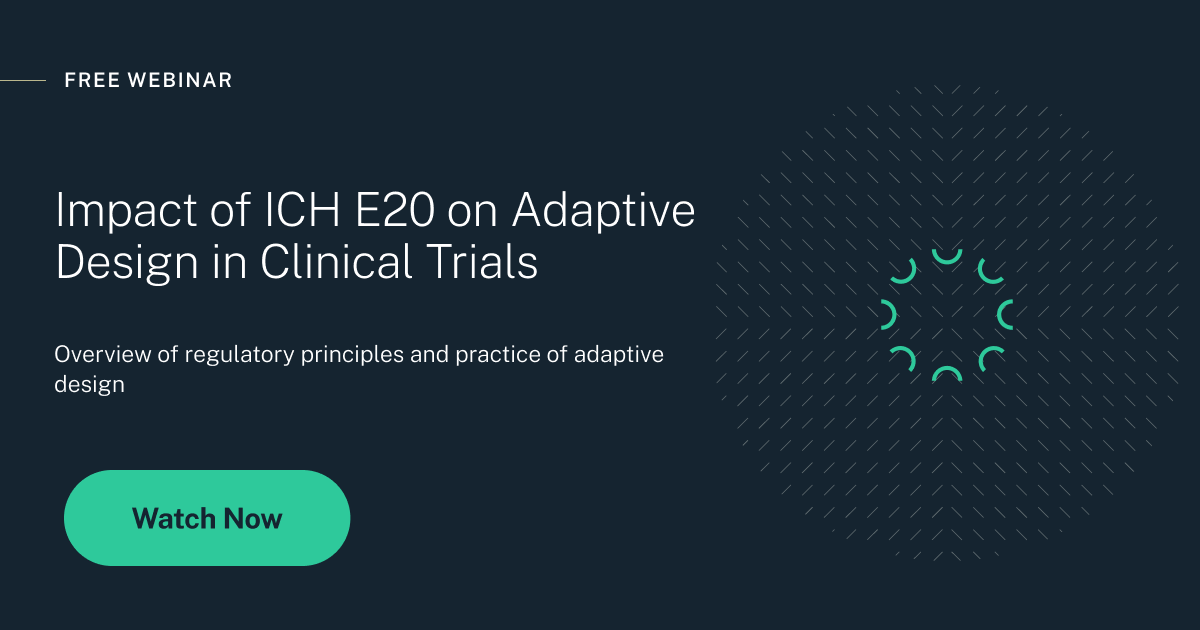How to Calculate Sample Size for Group Sequential Designs
Group Sequential Design Tools in nQuery
nQuery offers a range of functionality to aid in adaptive clinical trial design. In this article, we highlight nQuery’s Group Sequential Design tools.
While adaptive clinical trials can help reduce trial length and cost, and potentially get life-changing drugs to patients sooner, their design must be carefully and thoroughly planned.
What is Group Sequential Trial Design?
Sequential Trial Design involves monitoring and analyzing accumulated data while a trial is still ongoing. This approach to adaptive trial design is ideal for confirming whether trial adjustment, or even early trial cessation, is warranted based on efficacy and/or futility.
There are two main types of Sequential Trial Design: Fully Sequential & Group Sequential.
Fully Sequential Design
In Fully Sequential trials, analysis can happen continuously; this may occur as frequently as after each subject’s results become available. Fully Sequential Design typically utilizes analysis approaches such as sequential probability ratio testing and Bayesian methods. Fully Sequential Design offers quick results, minimized expected sample size, and easy communication, but it can create issues related to estimate reliability/validity, logistics, treatment lags, and greater and/or open study length and maximum sample size.
Group Sequential Design
Alternatively, in Group Sequential Design, specific analyses happen at pre-specified interim points for certain cohorts of subjects. Group Sequential Design is frequently used in longer-term, confirmatory FDA Phase III trials after a certain amount of time has passed or a certain number of subjects have been studied. There are a variety of different methods available, as discussed in the following section. The advantages of Group Sequential Design include estimate validity, simpler planning and pre-specification, lower logistical burden, and flexibility. However, results can be slower than continuous analysis; timing is more rigid, and there is a lower reduction in expected sample sizes compared to Fully Sequential approaches.
Group Sequential Design Methods in nQuery
In Group Sequential Design, efficacy and futility boundaries are calculated and used to assess the proposed treatment’s performance at specific points throughout the course of the trial, rather than just at the end of a fixed-term trial.
These defined boundaries help determine whether or not there is strong evidence that a proposed treatment will be effective. There are multiple ways to calculate boundaries and perform interim assessment. Both nQuery Pro and nQuery Expert offer the following methods for Group Sequential boundary calculation.
Lan-DeMets Error Spending Approach
This commonly used method allows for Group Sequential Design in cases of unequal sample sizes and offers high flexibility during the design and analysis stages. The Lan-DeMets method utilizes an error spending function to construct efficacy and futility boundaries by spending a proportion of the total errors at each point of analysis. It can accommodate a range of stopping rules and is adaptable to changes in the analysis stage.
Haybittle-Peto Boundary
Another common method for Group Sequential Design, Haybittle-Peto involves fixed efficacy boundary construction based on unadjusted p-values at each interim analysis. It is particularly useful for determining whether a trial should stop early due to efficacy.
Wang-Tsiatis / Pampallona-Tsiatis Boundaries
This simple and flexible approach enables construction of efficacy (Wang-Tsiatis) and equivalent efficacy-futility boundaries (Pampallona-Tsiatis). This approach can be useful when trying to help determine the optimal average sample size under a specific hypothesis.
Classic Error Spending Functions
Although now less utilized than modern approaches, there are many classical error-spending functions, which vary in terms of their flexibility. In general, less flexible methods, such as O’Brien-Fleming, Pocock, Hwang-Shih-DeCani, and Power Family, offer a good balance of statistical power and lower average sample size, whereas more flexible methods offer more fine control over error spending, but can lead to inefficient Group Sequential Design.
Unified Family Boundaries
There are a number of highly flexible unified family approaches for determining efficacy and futility boundaries. A commonly used unified approach is a two-parameter method that includes Wang-Tsiatis and classic designs as subsets. It is important to keep in mind that these powerful methods offer a lot of control over the boundaries and therefore warrant a careful approach.
Custom Boundaries
Custom tools for defining efficacy and futility boundaries allow input of any series of boundary values on a preferred statistical scale. They may utilize calculations such as Z-statistic, p-value, score statistic, endpoint-treatment effect, alpha error (efficacy only), beta error (futility only), and conditional power (futility only).

Group Sequential Design set up in nQuery
Key Considerations for Sequential Trial Design
A number of logistical and statistical considerations must be made when scoping out Sequential Design trials; for example, teams should keep in mind:
- Overall Design Decisions: Careful consideration is needed on everything from the number of trial arms and specific endpoint(s), to sample size and power, to efficacy and futility boundary choices, to interim analysis timing and methodologies.
- Type 1 Error Adjustment: Having multiple analyses, and thereby chances to succeed, can inflate Type 1 error, and therefore, Sequential Design Trials must adjust for this with appropriate statistical/adjustment methods.
- Operational Bias Avoidance: Planning for interim analyses must take into account exactly who will conduct review, how stopping decisions will be determined, and how blinding will be retained.
- Analysis Considerations: Special circumstances may impact assessment; for example, how will early trial adjustment or cessation impact safety and efficacy analysis? What adjustments will be needed if interim analysis differs from initial design or occurs slower than expected?
Because the intricacies of a trial’s design can have a significant impact, teams need a way to preemptively assess trial design. The article, Optimise Adaptive Trials with nQuery's Group Sequential Design Tools, provides an overview of the simulation functionality available in nQuery to help assess and compare different trial designs.
Learn More About nQuery’s Group Sequential Design Tools
nQuery’s Group Sequential Design tools offer a robust solution for adaptive clinical trial planning, particularly in trials that benefit from interim analyses for efficacy and futility.
By enabling various methods like the Lan-DeMets error spending approach, Haybittle-Peto, and Wang-Tsiatis boundaries, nQuery supports flexible, data-driven trial adjustments. Each approach has its unique strengths, such as balancing statistical power, handling unequal sample sizes, and minimizing logistical burden, making nQuery a versatile choice for managing both trial duration and resource use.
Once a trial design has been thoroughly planned using nQuery’s Group Sequential Design Tools, nQuery’s simulation features help researchers preemptively assess trial design choices, ultimately facilitating more efficient, adaptable trials that meet regulatory standards and bring effective treatments to market faster.
How to Calculate Sample Size for Group Sequential Designs
Gain a deeper understanding of group sequential designs in nQuery by reviewing an overview of nQuery’s Group Sequential Design techniques.
View the webinar below for an in-depth exploration and explore real-world examples of sequential designs implemented in clinical trials.














